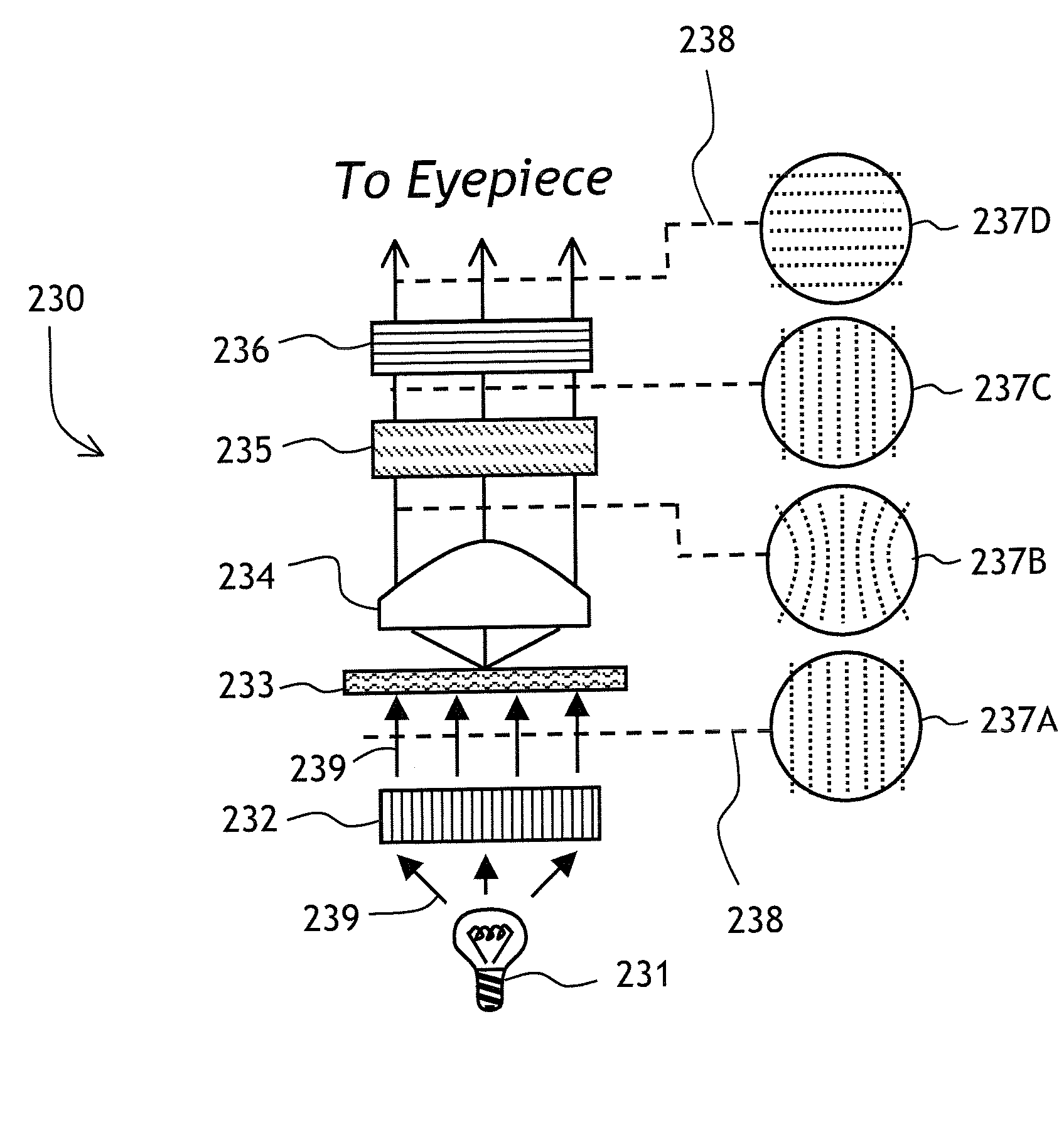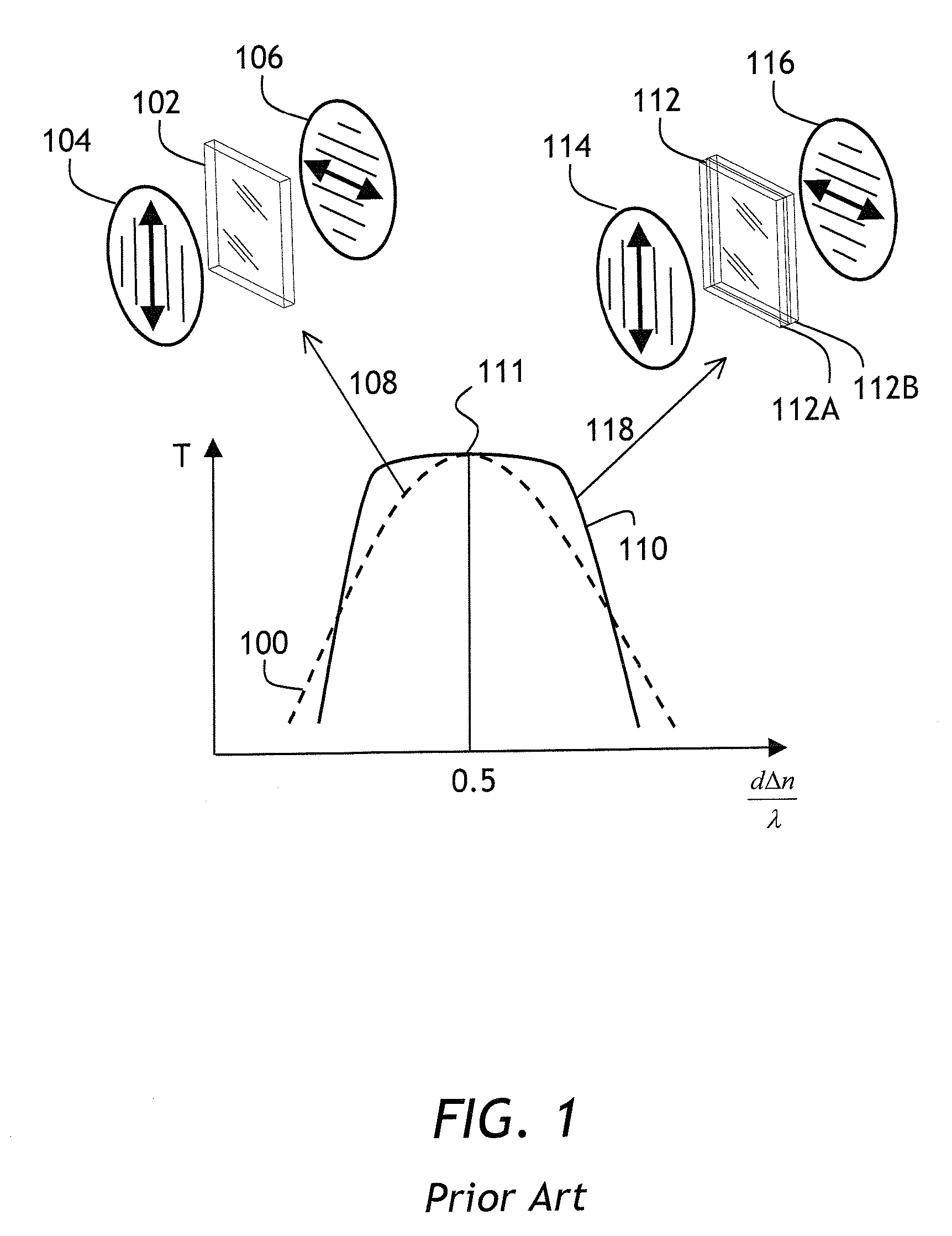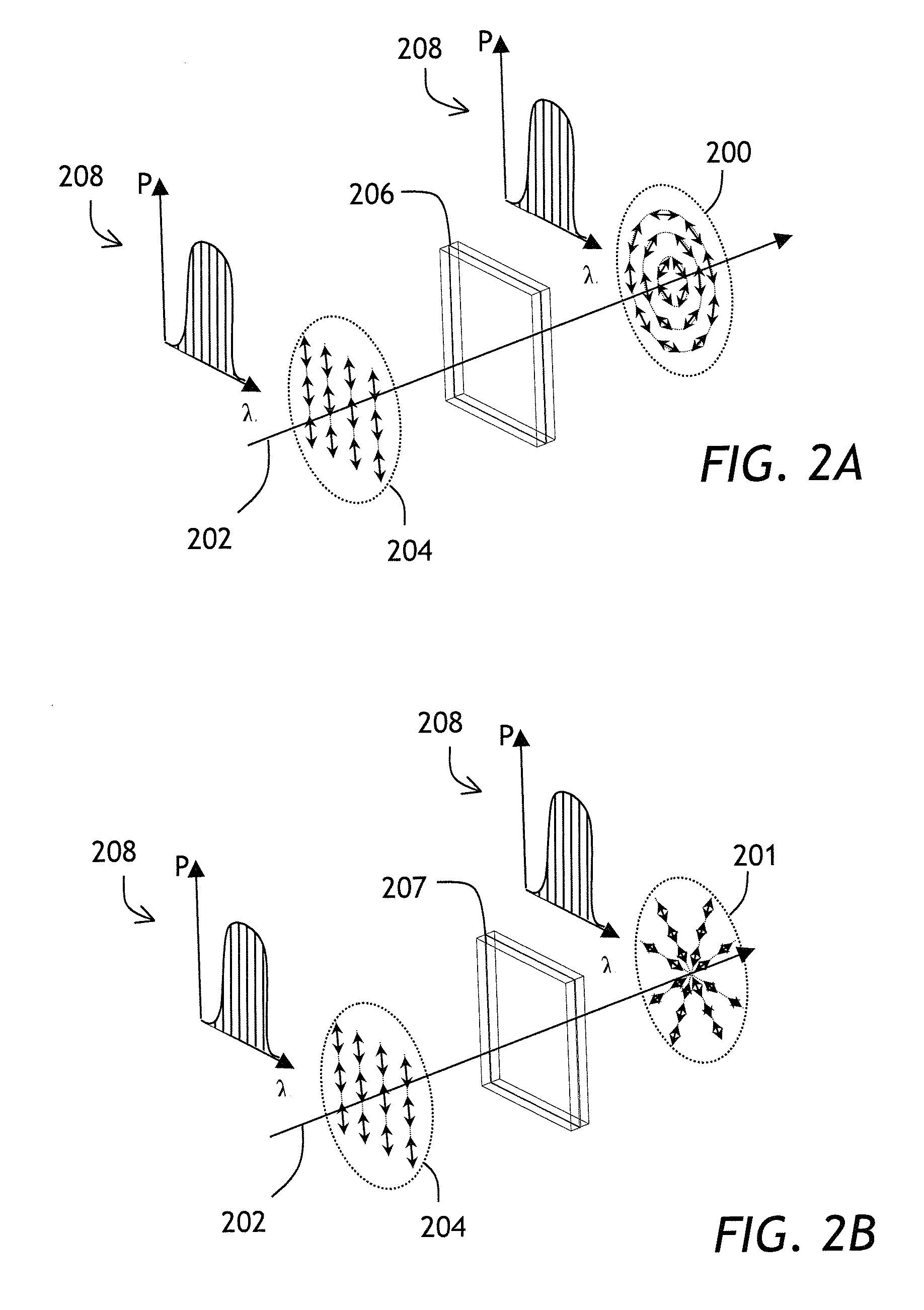Achromatic Converter Of A Spatial Distribution Of Polarization Of Light
a technology of achromatic converter and spatial distribution, applied in the field of optical elements, can solve the problems of phase shift between these two waves, inability to provide practical solutions to existing state of the art, and achromatic performance, and achieve the effect of reducing the loss of fresnel in visual displays
- Summary
- Abstract
- Description
- Claims
- Application Information
AI Technical Summary
Benefits of technology
Problems solved by technology
Method used
Image
Examples
embodiment a
[0068]This particular embodiment of a polarization converter for achromatically rotating an input linear polarization distribution φin(x,y) by the amount Δφ(x,y), with the resulting spectral bandwidth of PCE being substantially the same for any Δφ, and the magnitude of PCE being not smaller than for the specific case Δφ=π / 2 considered earlier, consists of three birefringent layers having retardation Γnom=λnom / 2 and a distribution of the angles of local optical axes θ1, θ2, and θ3 defined as follows:
θ1(Δϕ,ϕin)={ϕin+Δϕ(a-δπ / 2)forΔϕ≤π2ϕin+ΔϕΔϕ[π2(a-δπ / 2)+(Δϕ-π2)(a+δπ / 2)]forπ2<Δϕ≤π(7)θ2(Δϕ,ϕin)=ϕin+bΔϕ(8)θ3(Δϕ,ϕin)={ϕin+Δϕ(c+δπ / 2)forΔϕ≤π2ϕin+ΔϕΔϕ[π2(c+δπ / 2)+(Δϕ-π2)(c-δπ / 2)]forπ2<Δϕ≤π(9)
wherein a=⅞, b=½, c=⅛, and δ is a modifier angle that is adjusted produce the desired range of achromaticity and the level of polarization conversion for Δφ=π / 2. An optimized value of δ of 1.5°˜2.0° allows one to achieve a high degree of polarization conversion over most of the visible spectrum; how...
embodiment b
[0071]The Embodiment B is an improvement of the Embodiment A considered above, particularly for 7π / 8in(x,y) by the amount Δφ(x,y), with the resulting spectral bandwidth of PCE being substantially the same for any Δφ and the magnitude of PCE being not smaller than for the specific case Δφ=π / 2 considered earlier, consists of three birefringent layers having retardation Γnom=λnom / 2 and a distribution of the angles of local optical axes θ1, θ2, and θ3 defined in the same way as in (7), (8), and (9), respectively. However, the parameters a and c are defined differently:
a={78forΔϕ≤7π8Δϕπfor7π8<Δϕ≤π(10)b=1 / 2(11)c={18forΔϕ≤7π81-Δϕπfor7π8<Δϕ≤π(12)
[0072]An optimized value of δ of 1.5°˜2.0° allows one to achieve a high degree of polarization conversion over most of the visible spectrum for Δφ=π / 2; however the values of 0°≦δ≦6° can still be used.
[0073]Turning now to FIG. 15, the angles θ1, θ2, and θ3 are plotted as a function of Δφ. The angles θ1, θ2, and θ3 are calculated by using formul...
embodiment c
[0075]This particular embodiment of a polarization converter for achromatically rotating an input linear polarization distribution φin(x,y) by the amount Δφ(x,y), with the resulting spectral bandwidth of PCE being substantially the same for any Δφ and the magnitude of PCE being not smaller than for the specific case Δφ=π / 2 considered earlier, consists of three birefringent layers having retardation Γnom=λnom / 2 and a distribution of the angles of local optical axes θ1, θ2, and θ3 defined as follows:
θ1(Δϕ,ϕin)={ϕin+Δϕ(a-δπ / 2)forΔϕ≤π2ϕin+ΔϕΔϕ[π2(a-δπ / 2)+(Δϕ-π2)(a+δπ / 2)]forπ2<Δϕ≤7π8ϕin+ΔϕΔϕθ1(7π / 8,0)+(Δϕ-7π / 8)(π-θ1(7π / 8,0))π / 8for7π8<Δϕ≤π(13)θ2(Δϕ,ϕin)=ϕin+bΔϕ(14)θ3(Δϕ,ϕin)={ϕin+Δϕ(c+δπ / 2)forΔϕ≤π2ϕin+ΔϕΔϕ[π2(c+δπ / 2)+(Δϕ-π2)(c-δπ / 2)]forπ2<Δϕ≤7π8ϕin+ΔϕΔϕθ3(7π / 8,0)+(Δϕ-7π / 8)(-θ3(7π / 8,0))π / 8for7π8<Δϕ≤π(15)
wherein a=⅞, b=½, c=⅛, and δ is a modifier angle that is adjusted produce the desired range of achromaticity and the level of polarization conversion over the most of the visibl...
PUM
 Login to View More
Login to View More Abstract
Description
Claims
Application Information
 Login to View More
Login to View More - R&D
- Intellectual Property
- Life Sciences
- Materials
- Tech Scout
- Unparalleled Data Quality
- Higher Quality Content
- 60% Fewer Hallucinations
Browse by: Latest US Patents, China's latest patents, Technical Efficacy Thesaurus, Application Domain, Technology Topic, Popular Technical Reports.
© 2025 PatSnap. All rights reserved.Legal|Privacy policy|Modern Slavery Act Transparency Statement|Sitemap|About US| Contact US: help@patsnap.com



